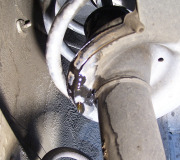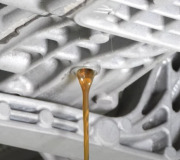Any diagnostic fault code that refers to something that could adversely affect emissions will turn on the check engine light, but the severity of that code affects how the light acts. If the problem is intermittent, the check engine light might go off while driving when the problem stops acting up. If it is more severe, the light will be on any time you are driving, even if the problem stops acting up.
When the check engine light was never on, the problem that was detected is not related to increased emissions. That includes the catalytic converter. Its job is to clean up the exhaust gas, so any problem with the converter will result in increased emissions and will turn the light on.
The people at most auto parts stores will read fault codes for you for free, but remember they are in the business of selling parts. It is important to understand that fault codes never say to replace parts or that one is bad. They only indicate the circuit or system that needs further diagnosis, or the unacceptable operating condition. When a part is referenced in a fault code, that part is actually the cause of the code about half of the time. First you have to check for cut and grounded wires, stretched or corroded connector terminals, and things like that.
When you have the codes read, record the numbers. We have a list of descriptions. Those descriptions from code readers, when they are supplied, can be confusing at times.
Tuesday, June 28th, 2016 AT 3:53 PM



